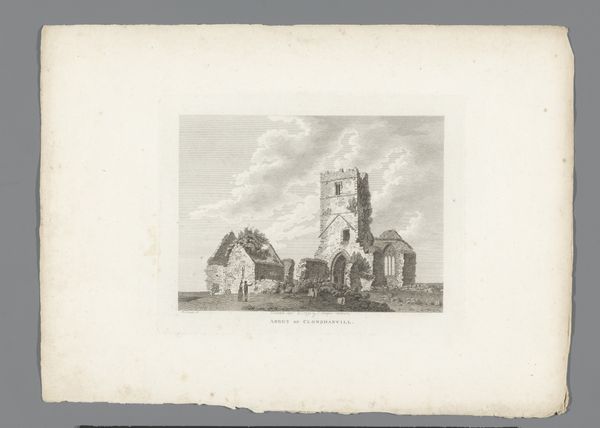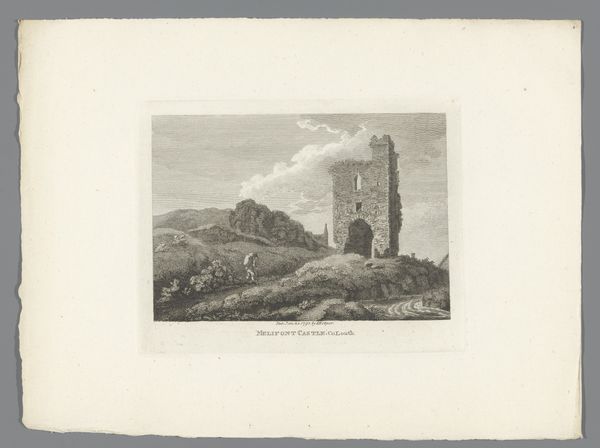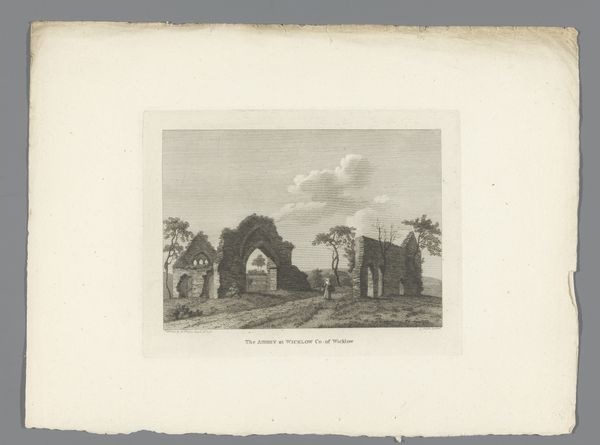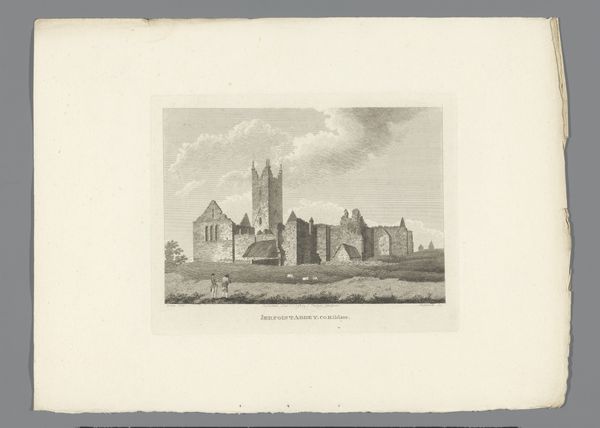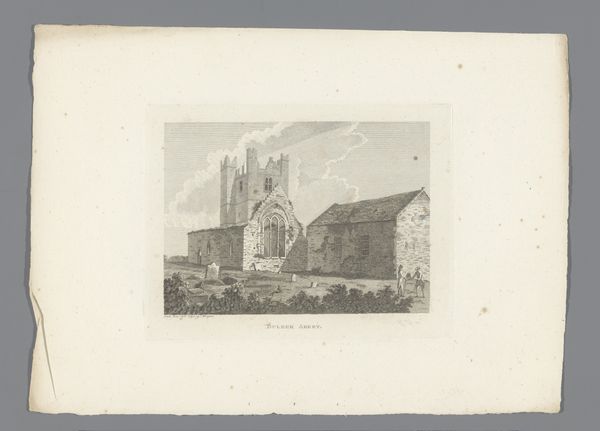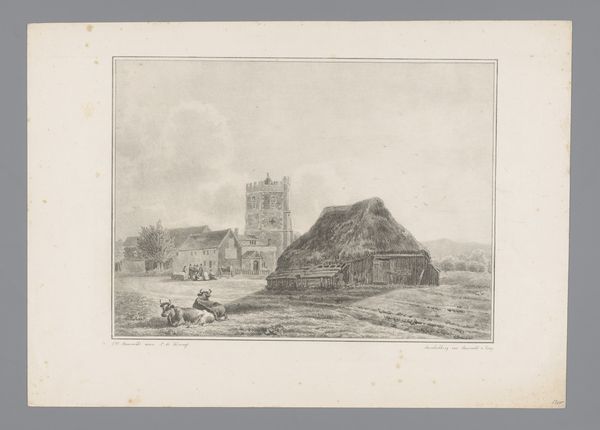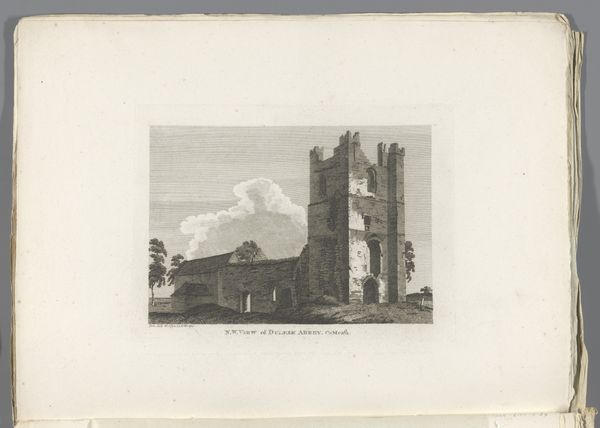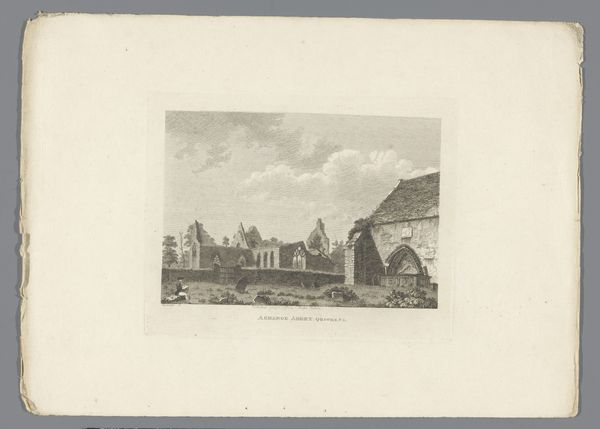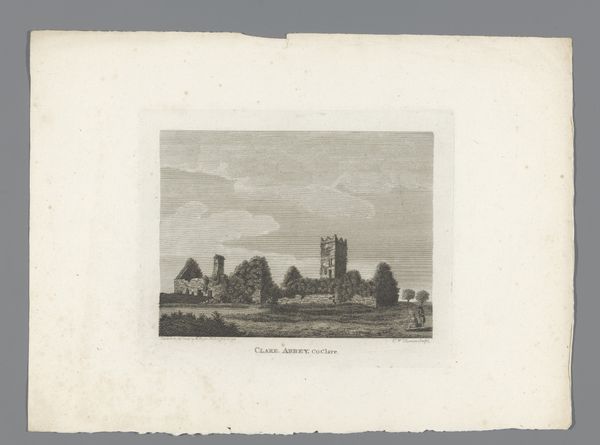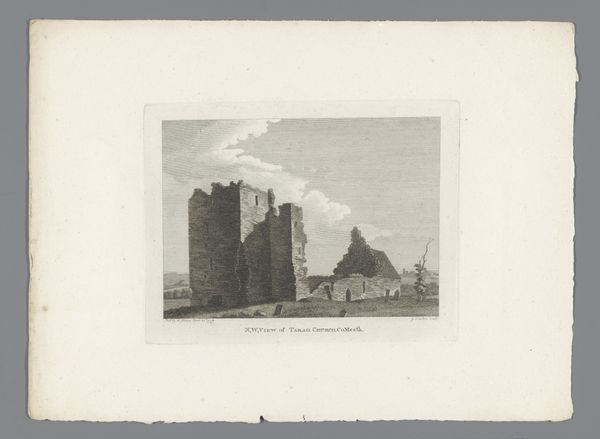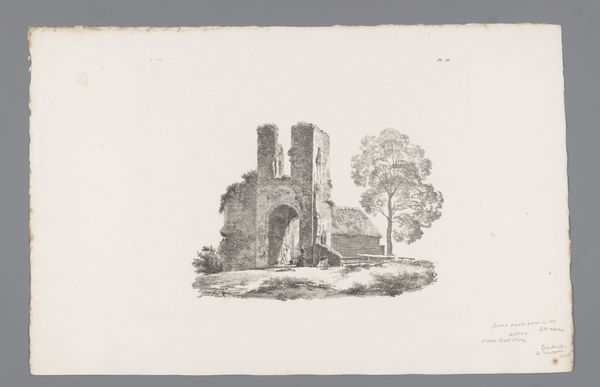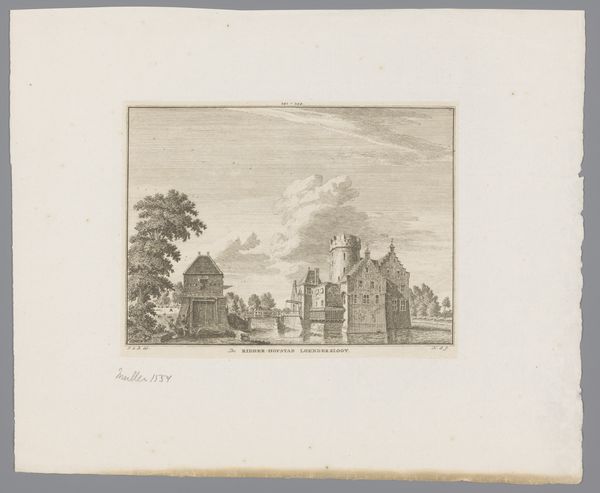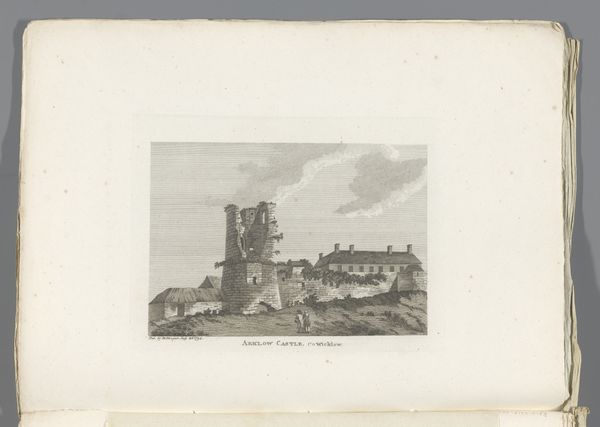
print, etching, engraving
#
medieval
# print
#
etching
#
landscape
#
line
#
cityscape
#
history-painting
#
engraving
#
realism
Dimensions: height 155 mm, width 200 mm
Copyright: Rijks Museum: Open Domain
James Newton rendered this view of the Kilussy church ruins as an engraving in the late 18th century. Here, we see the tower standing tall, yet bearing the marks of time and decay, a universal symbol of transience. The ruin becomes a powerful memento mori, reminding us of the inevitable decline of all things. This motif echoes through art history, from ancient Roman ruins depicted in Piranesi’s etchings, to the crumbling castles found in Romantic paintings. These images touch on the cyclical nature of civilization, the rise and fall, reflecting a collective consciousness grappling with temporality. Consider Caspar David Friedrich’s landscapes, where ruins evoke a sublime, melancholic experience, connecting personal emotion with broader historical and natural cycles. These ruins tap into a deep, subconscious awareness of time’s passage and its effect on human endeavors. This image, like others, doesn't just depict a scene but engages us in a silent dialogue about history, memory, and our fleeting existence. Each crumbling stone whispers tales of the past, inviting us to reflect on our own place within the grand tapestry of time.
Comments
No comments
Be the first to comment and join the conversation on the ultimate creative platform.
